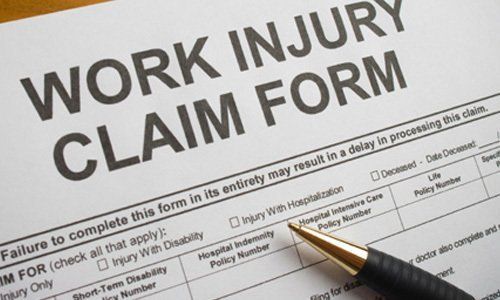How To Hire Physically Abled Employees

Utilize Post-Offer Physical Evaluation Testing to Ensure Proper Job Matching
With the job market tightening as the nation sees a resurgence in the economy, human resource managers are faced with shrinking candidate pools and greater competition. Under these conditions, employers no longer have the latitude to make hiring mistakes, especially for skilled labor positions. Organizations that conduct post-offer physical evaluations are able to acquire the job market’s most valuable candidates and properly place them within the organization. Not only does proper initial placement mitigate turnover, it ensures that the best talent available in the marketplace can find an ideal position within your organization – and not with your competition.
After years of recession, unemployment in the United States decreased to 5.6 percent as of January 2015. According to the business forecasting group Kiplinger , the labor market will only continue to tighten. In January 2015, companies hired 257,000 more workers, with particular competitive gains in health care, food service, retail, and construction. With the job pool shrinking in such physically demanding industries, every job candidate that demonstrates a high level of talent is a valuable commodity. For employers adding a post-offer physical evaluation test into their new hire process, the Physical Capacity Profile® Test provides objective, industry-standard data to ensure proper job matching.
Physical Capacity Profile® (PCP) Test
The PCP Test provides a comprehensive evaluation of a candidate’s physical fitness, objectively-measured against the following industry-standard job level descriptions:
- Level 1 : Sedentary Work - Exerting up to 10 pounds of force occasionally and/or a negligible amount of force frequently. Involves sitting most of the time, but may involve walking or standing.
- Level 2 : Light Work - Exerting up to 20 pounds of force occasionally, and/or up to 10 pounds of force frequently. Requires walking or standing to a significant degree: or requires sitting most of the time but entails pushing and/or pulling of arm or leg controls.
- Level 3 : Medium Work - Exerting 20 to 50 pounds of force occasionally, and/or up to 10 to 25 pounds of force frequently, and/or greater than negligible up to 10 pounds of force constantly.
- Level 4 : Heavy Work - Exerting 50 to 100 pounds of force occasionally, and/or 25 to 50 pounds of force frequently, and/or 10 to 20 pounds of force constantly.
- Level 5 : Very Heavy Work - Exerting in excess of 100 pounds of force occasionally, and/or in excess of 50 pounds of force frequently, and/or in excess of 20 pounds of force constantly.
The PCP test requires the applicant to complete a variety of repeated physical activities that are captured electronically and measured objectively against industry-standard criteria outlined by the American Medical Association (AMA). The computer-generated output report summarizes what job level the candidate applied for, and what level he/she demonstrated during the test.
If, for example, a candidate applies for a level four position, during the PCP test, they will need to demonstrate the ability to exert 50 to 100 pounds of force occasionally, and/or 25 to 50 pounds of force frequently. The PCP test’s objective electronically captured data will indicate unequivocally whether the candidate meets these criteria. If they do, they will receive a numerical score of 4.0 or higher. By providing a numerical ranking on the job-level continuum, an employer can properly match a valuable candidate to a position within the organization.
There are two other commonly used methods of physical evaluation testing: a physician’s exam, and a job task simulation. While these methods can provide useful information about the candidate’s physical abilities, they lack objective data that can be used to identify where the candidate falls on the job level continuum.
The Physician’s exam aims to answer one basic question: Is this candidate healthy enough for manual labor. Physician’s exams are typically treated as pass/fail tests, with the ultimate determinations being based on the subjective opinion of the reviewer. The exam results do not indicate what level of physical labor a candidate can perform, nor where he/she is best suited within an organization.
A job task simulation is a tailored exam conducted by a medical professional that attempts to simulate the type of physical activity the individual will be doing if hired for a specific position. Like a physician’s exam, a job task simulation is reviewed on a pass/fail basis or a graded scale determined subjectively by the reviewer. The subjective evaluation standards of physical exams and job task simulations can result in valuable candidates being erroneously deemed as not fit for hire, at a loss to the employer.
Too often valuable job candidates are left to the competition when the new hire process fails to properly understand the candidate’s physical abilities. The PCP test does more than answer the question: “Is this candidate fit for this position?” Rather, the PCP answers the question: “Where is this valuable candidate best suited within our organization?” As the labor-market continues to shrink, incorporating PCP testing into your new hire strategy ensures that your organization is staffed with the best available talent, in positions that maximize their abilities.
Source: http://www.kiplinger.com/tool/business/T019-S000-kiplinger-s-economic-outlooks/










